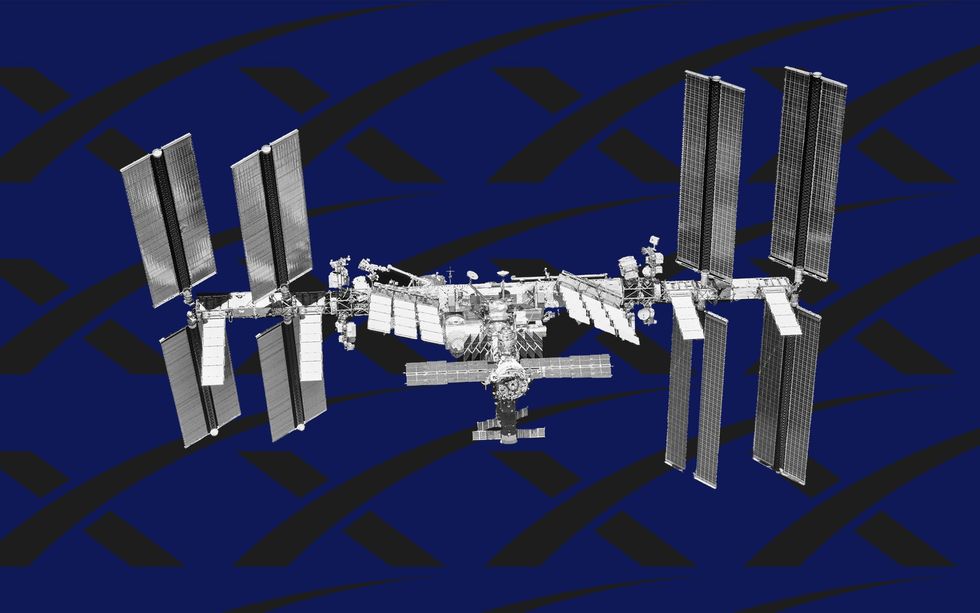
The FCC has as soon as once more rejected a Starlink plan to deploy hundreds of web satellites in very low earth orbits (VLEO) starting from 340 to 360 kilometers. In an order printed final week, the FCC wrote: “SpaceX could not deploy any satellites designed for operational altitudes under the Worldwide Area Station,” whose orbit can vary as little as 370 kilometers.
Starlink at present has practically 6000 satellites orbiting at round 550 kilometers that present web entry to over 2.5 million prospects all over the world. However its service is at present slower than most terrestrial fiber networks, with common latencies (the time for information to journey between origin and vacation spot) over 30 milliseconds at finest, and double that at peak occasions.
“In case you fill that area with tens of hundreds of satellites, it might put a good greater squeeze on them and actually compromise your potential to service the area station.” —Hugh Lewis, College of Southampton, U.Ok.
“The most important single aim for Starlink from a technical standpoint is to get the imply latency under 20 milliseconds,” mentioned Elon Musk at a SpaceX occasion in January. “For the standard of web expertise, that is really a very large deal. In case you play video video games like I typically do, that is additionally essential, in any other case you lose.”
The simplest method to scale back latency is to easily shorten the gap the information must journey. So in a February letter, SpaceX pleaded with the FCC to permit its VLEO constellation: “Working at these decrease altitudes will allow SpaceX to supply higher-quality, lower-latency satellite tv for pc service for shoppers, preserving tempo with rising demand for real-time functions.” These now embrace the army use of Starlink for communications in warzones corresponding to Ukraine.
Starlink additionally argued that its VLEO satellites would have collision possibilities ten occasions decrease than these in greater orbits, and be simpler to deorbit on the finish of their purposeful lives.
However the FCC was having none of it. The company had already deferred VLEO operations when it licensed Starlink operations in December 2022, and used very comparable languages in its order final week: “SpaceX should talk and collaborate with NASA to make sure that deployment and operation of its satellites doesn’t unduly constrain deployment and operation of NASA property and missions, helps security of each SpaceX and NASA property and missions, and preserves long-term sustainable space-based communications companies.”
Neither the FCC nor SpaceX replied to requests for remark, however the company’s reasoning might be fairly easy, in line with Hugh Lewis, professor of astronautics on the College of Southampton within the U.Ok. “We don’t perceive sufficient about what the dangers really are, particularly as a result of the variety of satellites that SpaceX is proposing is bigger than the quantity they’ve already launched,” he says.
“I feel the FCC could be overreacting. We’ll know the place all of the satellites are, we are able to watch them and keep away from them. It’s the stuff we are able to’t see that’s the issue.” —John Crassidis, College at Buffalo
Though it might sound that having satellites orbiting under the Worldwide Area Station (ISS) could be safer than orbiting above, the fast-moving, SUV-sized Starlink craft may prohibit when astronauts might attain the ISS—or depart in an emergency. “We’re already seeing interruptions in launch home windows because of Starlink,” says Lewis. “In case you fill that area with tens of hundreds of satellites, it might put a good greater squeeze on them and actually compromise your potential to service the area station.”
In February 2022, NASA really helpful that SpaceX put together an evaluation of launch window availability for the area station and interplanetary missions to make sure that Starlink wouldn’t considerably scale back entry to area. No such evaluation has been made public.
John Crassidis, professor of mechanical and aerospace engineering the College at Buffalo, isn’t satisfied the VLEO satellites could be that disruptive. “I feel the FCC could be overreacting. We’ll know the place all of the satellites are, we are able to watch them and keep away from them,” he says. “It’s the stuff we are able to’t see that’s the issue.”
Whereas VLEO is sort of empty in comparison with greater orbits, satellites there nonetheless danger collisions from satellites transiting as much as their operational altitudes—and significantly from objects making uncontrolled descents to Earth. “There’s a persistent stream of issues which are coming down, outdated cubesats and particles,” says Lewis. “It’s like a continuing rain coming down.”
New tips that should depart fewer lifeless satellites in area for many years might additionally imply extra transits by way of decrease orbits, in line with a paper Lewis wrote final yr. He thinks that impacts in VLEO might simply eject excessive velocity fragments as much as greater orbits: “So regardless that you’re under the ISS, the ISS would nonetheless be inside vary of a particles cloud for a collision at 350 kilometers.”
Crassidis disagrees. “You’d must have a really violent collision to make that occur,” he says. “That’s one thing I’m not anxious about.”
Other than security issues, different web satellite tv for pc operators additionally appear skeptical of SpaceX’s VLEO plans. Amazon requested the FCC for extra alternative to remark, whereas the Betzdorf, Luxembourg-based satellite tv for pc telecom firm SES despatched a letter citing issues about VLEO Starlinks interfering with its personal satellites.
Though SpaceX must hold deploying its satellites properly above 500 kilometers, the battle for a low-latency VLEO constellation isn’t over. The FCC solely deferred its determination on the low-flying satellites, together with 22,488 different satellites from SpaceX’s authentic utility, leaving the door open for future modifications.
However for now a minimum of, the astronauts of the ISS have received, and Musk and different on-line avid gamers might want to simply carry on dropping.
From Your Website Articles
Associated Articles Across the Internet

